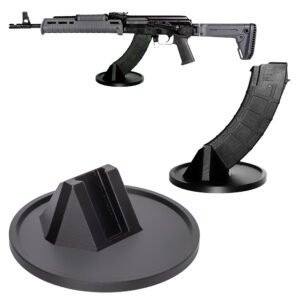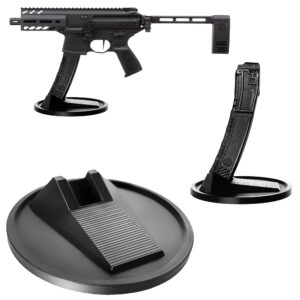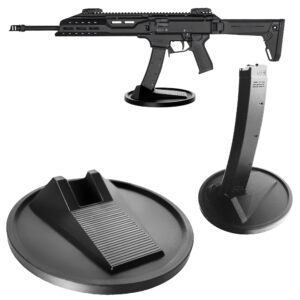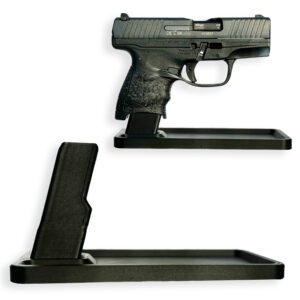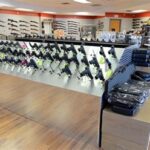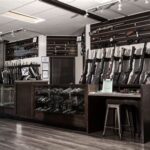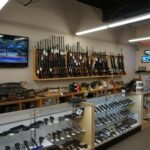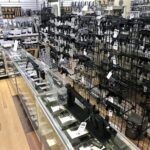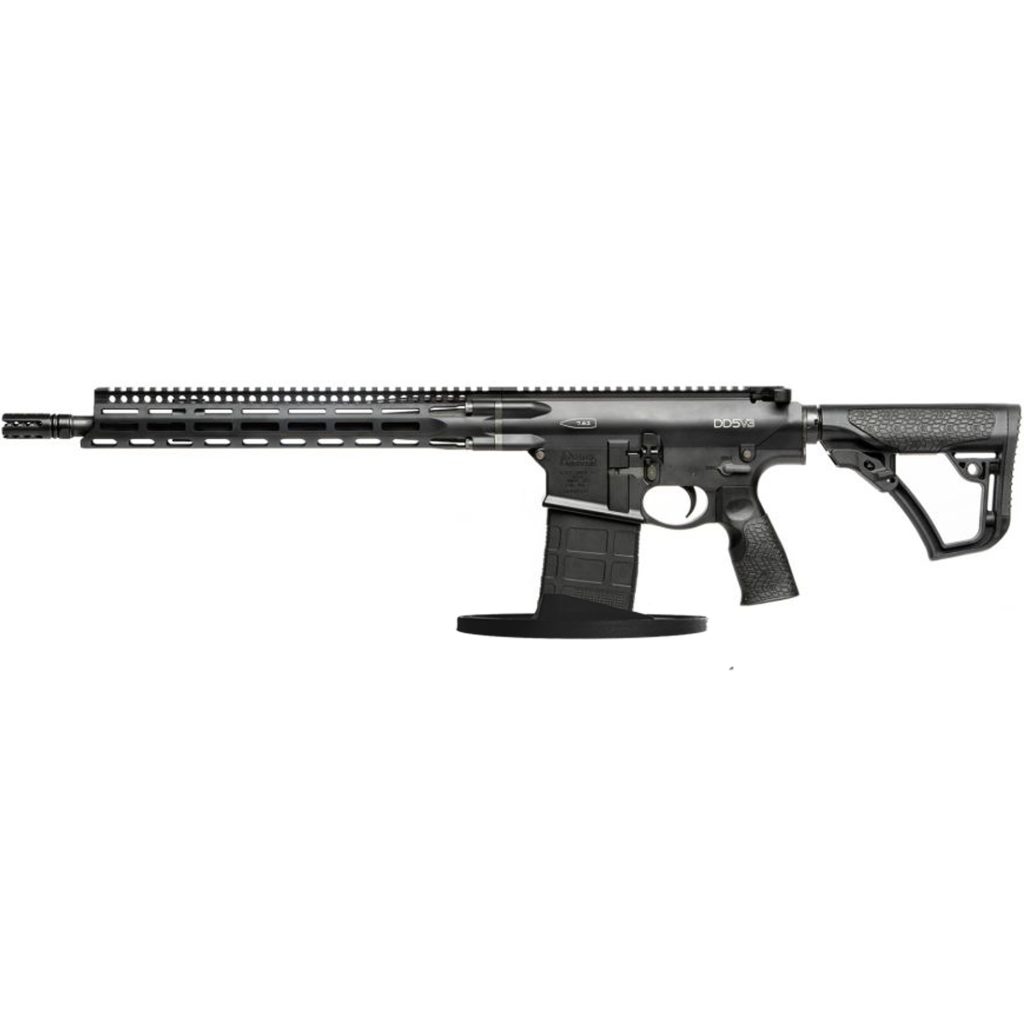Introduction To Gun Safety
Guns are powerful tools that require responsible handling and adherence to strict safety protocols. Whether you are a seasoned gun owner or a novice enthusiast, it is essential to prioritize firearm safety at all times. Understanding the fundamental principles of firearm safety not only protects yourself but also those around you. This introduction aims to provide an overview of crucial firearm safety tips that will help ensure safe and responsible firearm usage.
Firstly, always treat every firearm as if it were loaded, even if you believe it is unloaded. This rule serves as the foundation for firearm safety and emphasizes the importance of never assuming a gun is safe without proper verification. Secondly, keep your finger off the trigger until ready to shoot. Accidental discharges can easily occur when fingers are near the trigger area before intending to fire.
By maintaining a disciplined trigger finger position, you reduce the risk of unintentional firing.
Additionally, understanding and practicing proper muzzle control is vital in preventing accidents. Always point the muzzle in a safe direction away from people or anything you do not intend to shoot. Ensuring that your firearm’s muzzle remains pointed in a safe direction minimizes potential harm if an accidental discharge were ever to occur.
Lastly, secure your firearms when not in use by storing them unloaded in locked cabinets or safes with ammunition stored separately. Proper storage prevents unauthorized access and reduces the likelihood of accidents involving firearms.
By following these fundamental guidelines for firearm safety, we can contribute to creating a safer environment for both ourselves and others while enjoying responsible ownership of firearms
The Importance Of Safe Handling And Storage
When it comes to firearms, safety should always be the top priority. Responsible gun ownership entails not only knowing how to properly handle a firearm but also understanding the significance of secure storage. This subtopic will delve into the reasons why safe handling and storage are crucial aspects of firearm ownership.
Firstly, safe handling is paramount to prevent accidents and injuries. It begins with treating every firearm as if it were loaded, regardless of its actual condition. By adhering to this fundamental rule, one can avoid unintentional discharge or mishandling that may lead to tragic consequences. Proper grip, finger placement, and muzzle control are essential skills that ensure safe handling practices.
Equally important is the secure storage of firearms when they are not in use. Guns should be stored in a manner that prevents unauthorized access by children or individuals who are not trained in their use. Lockable gun safes or cabinets provide an effective means of storing firearms securely while still allowing quick access for authorized users in case of emergency.
Safe storage also helps deter theft and reduces the risk of firearms falling into the wrong hands. By keeping firearms locked away when not in use, responsible gun owners contribute to minimizing incidents involving stolen weapons used in illegal activities.
In conclusion, safe handling and proper storage play integral roles in responsible firearm ownership. By following these practices diligently, individuals can help prevent accidents, promote personal safety within their households, and contribute towards reducing crime rates associated with stolen weapons. Remember: safety should never be compromised when it comes to firearms—always prioritize secure handling and storage procedures.
Choosing The Right Gun For Your Needs
When it comes to firearms, selecting the right one for your needs is crucial for both safety and effectiveness. With a myriad of options available, understanding your requirements and making an informed decision is essential. Here are some factors to consider when choosing the right firearm:
1. Purpose: Begin by determining the primary purpose of your firearm. Is it for self-defense, hunting, target shooting, or competition? Each purpose necessitates a specific type of firearm with distinct features and capabilities. 2. Caliber: The caliber of a firearm refers to the diameter of its ammunition. Different calibers offer varying degrees of power, recoil, and accuracy. Understanding your intended use will help determine which caliber is most suitable for you.
3. Size and Weight: Consider the size and weight of the firearm as it can significantly impact comfort, ease of use, and maneuverability. Smaller firearms are often more suitable for concealed carry or home defense purposes while larger ones may be better suited for hunting or range shooting. 4. Ergonomics: Pay attention to how a firearm feels in your hand; comfort plays a significant role in accuracy and control during shooting sessions.
5. Safety Features: Evaluate the safety features offered by different firearms such as external safeties, trigger safeties, or magazine disconnects based on your preferences. 6. Training Availability: Before purchasing any firearm, ensure that proper training resources are available to learn how to handle it safely and proficiently.
Understanding And Practicing Proper Gun Handling Techniques
When it comes to firearm safety, understanding and practicing proper gun handling techniques is of utmost importance. Whether you are a seasoned gun owner or a beginner, these techniques ensure the safety of yourself and those around you. By following these guidelines, you can minimize the risks associated with firearms and promote responsible gun ownership.
Firstly, always treat every firearm as if it is loaded. This means never assuming that a gun is unloaded unless you have personally checked it yourself. Always keep your finger off the trigger until you are ready to shoot, pointing the firearm in a safe direction away from people or valuable objects.
Secondly, familiarize yourself with your specific firearm’s manual and understand how it operates. Each model may have different features, so knowing how to safely load, unload, and handle your weapon is essential.
Furthermore, maintain proper grip and control over your firearm at all times. This includes firmly grasping the grip with both hands while keeping your finger outside of the trigger guard until ready to fire. By doing so, accidental discharges can be avoided.
Additionally, never rely solely on mechanical safeties as they can fail. Always apply an additional layer of safety by keeping your finger off the trigger until ready to shoot.
Lastly, practice regular maintenance on your firearms to ensure their reliability and performance. Cleaning and inspecting them regularly will help prevent malfunctions that could potentially lead to accidents.
By understanding and implementing these proper gun handling techniques into your routine as a responsible gun owner, you contribute towards promoting firearm safety for yourself and others in any given situation.
Essential Gun Safety Rules Every Gun Owner Should Know
As a responsible gun owner, it is imperative to prioritize firearm safety at all times. By adhering to a set of essential safety rules, you not only protect yourself but also those around you. Here are some key principles every gun owner should know:
1. Treat every firearm as if it is loaded: Regardless of whether you believe the firearm is unloaded or have personally checked it, always handle it with the utmost care and respect. Never point a gun at anything you do not intend to shoot. 2. Keep your finger off the trigger: Until you are ready to fire, ensure your finger remains outside the trigger guard and alongside the frame of the firearm.
This simple practice prevents accidental discharges. 3. Always be aware of your target and beyond: Before firing, be certain of what lies in front of and behind your intended target. Bullets can penetrate objects and travel considerable distances, so exercise caution to prevent unintended harm. 4. Store firearms securely: When not in use, store your firearms in a locked container or safe that is inaccessible to unauthorized individuals such as children or visitors who lack proper training.
5. Educate yourself about firearms: Familiarize yourself with the specific characteristics and operation of each firearm you own or plan to use. Attend training courses or seek guidance from experienced shooters to enhance your knowledge and proficiency. 6. Avoid alcohol or drugs when handling firearms: Never handle firearms while under the influence of substances that impair judgment or coordination – this includes both legal and illegal substances.
Safe Storage Options For Guns
Properly storing firearms is a crucial element of responsible gun ownership. By ensuring that firearms are stored securely, we can help prevent accidents, thefts, and unauthorized access. Here are some safe storage options to consider:
1. Gun Safes: Investing in a high-quality gun safe is one of the most effective ways to secure your firearms. These safes are designed with reinforced steel construction and feature multiple locking mechanisms, including electronic locks or combination locks. Some safes also offer fireproofing features, protecting your firearms from damage in case of a fire. 2. Locking Devices: Utilizing locking devices such as cable locks or trigger locks can add an extra layer of security to your firearm storage routine.
Cable locks thread through the barrel or action of the firearm, preventing it from being loaded or fired. Trigger locks attach around the trigger guard, making it impossible to pull the trigger. 3. Lockable Cases: Transporting firearms safely requires appropriate cases that provide both secure storage and protection during transit. Choose lockable cases made specifically for firearms that feature sturdy construction and reliable locking mechanisms.
4. Hidden Compartments: Concealing your firearms within hidden compartments can be an additional safety measure against theft or unauthorized access. Various furniture pieces like nightstands, shelves, or cabinets come equipped with secret compartments designed for discreet firearm storage. Remember that safe storage options should always be complemented by responsible practices such as keeping ammunition separate from firearms and regularly inspecting and maintaining your storage equipment.
Teaching Children About Gun Safety
Ensuring the safety of children around firearms is of utmost importance. Educating children about firearm safety can help minimize accidents and prevent tragic incidents. Here are some essential tips for teaching children about firearm safety:
1. Establish open communication: Start by having an open and honest conversation with your child about firearms. Encourage them to ask questions and express any concerns they may have. 2. Demystify firearms: Teach children that firearms are not toys, but potentially dangerous tools that require responsible handling. Explain how a firearm works, emphasizing that it should never be touched without adult supervision.
3. Set clear boundaries: Establish strict rules regarding firearms in your home, such as prohibiting unsupervised access or handling of guns. Ensure these rules are consistently enforced. 4. Teach the “Stop! Don’t Touch! Run Away! Tell an Adult!” rule: Instruct your child to immediately stop what they are doing if they come across an unattended firearm, avoid touching it, leave the area, find a trusted adult, and inform them about the situation.
5. Encourage responsible reporting: Emphasize to your child that if they encounter someone who is mishandling or showing off a firearm irresponsibly, they should report it to a trusted adult immediately. 6. Promote safe storage practices: Teach children that firearms should always be stored securely in locked cabinets or safes when not in use, with ammunition stored separately. 7. Lead by example: Show responsible behavior around firearms yourself; this will reinforce their understanding of proper safety protocols.
Precautions When Carrying A Concealed Weapon
Carrying a concealed weapon is a significant responsibility that demands strict adherence to safety guidelines. By following these precautions, individuals can ensure their own safety and the safety of those around them. 1. Proper Training: Before carrying a concealed weapon, it is essential to undergo thorough training to develop the necessary skills and knowledge. Training should include understanding firearm laws, marksmanship practice, and situational awareness training.
2. Secure Holster: Invest in a high-quality holster designed specifically for concealed carry. A secure holster ensures the firearm remains in place and prevents accidental discharge while allowing for quick access when needed. 3. Trigger Discipline: Always keep your finger off the trigger until you are ready to shoot. This fundamental rule helps prevent unintended shootings in stressful situations or if the firearm is dropped.
4. Concealment: Ensure your weapon is adequately concealed to avoid unnecessary attention or alarm from others who may not understand or appreciate firearms. 5. Avoid Altercations: As a responsible gun owner, it is crucial to avoid confrontations whenever possible and prioritize de-escalation techniques over resorting to violence. 6. Mindful Handling: Treat every firearm as if it were loaded, even when you are certain it isn’t.
Always maintain control over your weapon, keeping it pointed in a safe direction away from yourself and others. 7. Mental Preparedness: Regularly assess potential threats in your environment while carrying concealed and mentally prepare for different scenarios that may require drawing or using your firearm.
Additional Tips For Ensuring Gun Safety At All Times
While the fundamental rules of firearm safety are well-known and widely practiced, it is crucial to go beyond these basics to ensure comprehensive firearm safety. By implementing these additional tips, you can enhance your understanding and commitment to responsible gun ownership. 1. Secure Storage: Properly storing firearms when not in use is essential. Invest in a quality gun safe or lockbox that restricts access to unauthorized individuals, especially children or visitors who may be unfamiliar with firearms.
Store ammunition separately from firearms to prevent accidental loading. 2. Regular Maintenance: Guns require regular maintenance to remain safe and reliable. Familiarize yourself with the manufacturer’s guidelines for cleaning and inspecting your firearm regularly. By doing so, you can identify any potential issues before they become safety hazards. 3. Proper Handling Techniques: Even if you are an experienced shooter, it is beneficial to participate in ongoing training courses that emphasize proper handling techniques specific to different types of firearms.
Such courses can help reinforce safe practices while introducing new skills that reduce the likelihood of accidents. 4. Awareness of Surroundings: Maintain situational awareness when handling firearms, whether at home or out in the field. Ensure your shooting range or practice area provides a clear line of sight without any obstructions or potential hazards nearby. 5. Secure Transportation: When transporting firearms outside your home, always use a secure case specifically designed for gun transportation.
Ensure the case is locked and inaccessible during transit, minimizing the risk of unauthorized access.
Related

